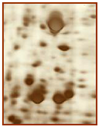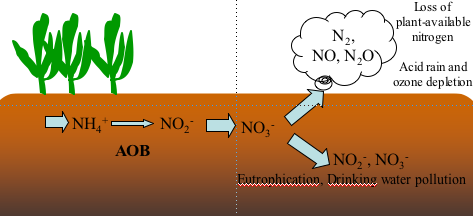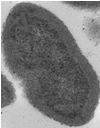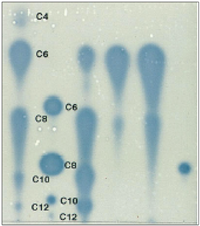 |
Molecular
Ecophysiology of Nitrosomonas europaea |
Project Overview & Goals
 Proteomics of Stress Response Proteomics of Stress Response |
Ammonia-oxidizing bacteria (AOB) such as Nitrosomonas europaea and nitrite-oxidizing bacteria collectively mediate the process of nitrification, the conversion of ammonium to nitrate.Nitrification is potententially detrimental as nitrate may be lost from soil by leaching and pollute groundwater, or converted to nitrogen oxides that pollute the atmosphere.

 Starvation
and Cell Structure Starvation
and Cell Structure |
The AOB carryout the rate-limiting step in nitrification, and thus significantly affect the potential for nitrate pollution.
|
The goal of this project is to discover how the AOB adapt to live in the soil environment, and the soil factors that affect AOB activity. There are two study groups, one focuses on stress response and the other on biochemical ecology. Stresss responses are being studied primatly using proteomics approaches, complemennted with other techniques such as electron microscopy.
What we learn from these studies will greatly improve our understanding of this organisms biology. Ultimately, this knowledge could help in the development of means and approaches to prevent or minimize nitrogen pollution of the environment.
This website contains information on our approaches and some of the initial results.
|
William Hickeyİ2004 |
